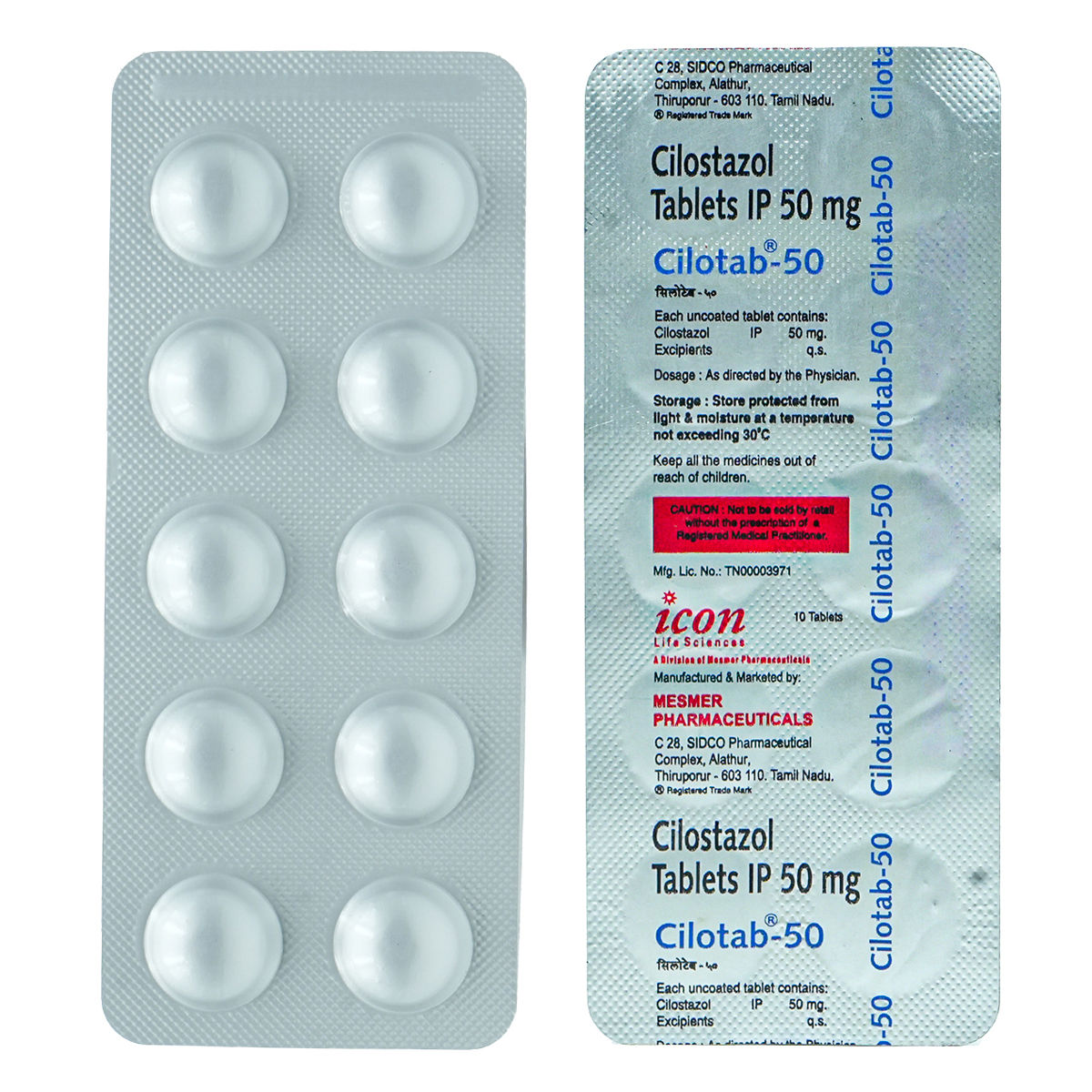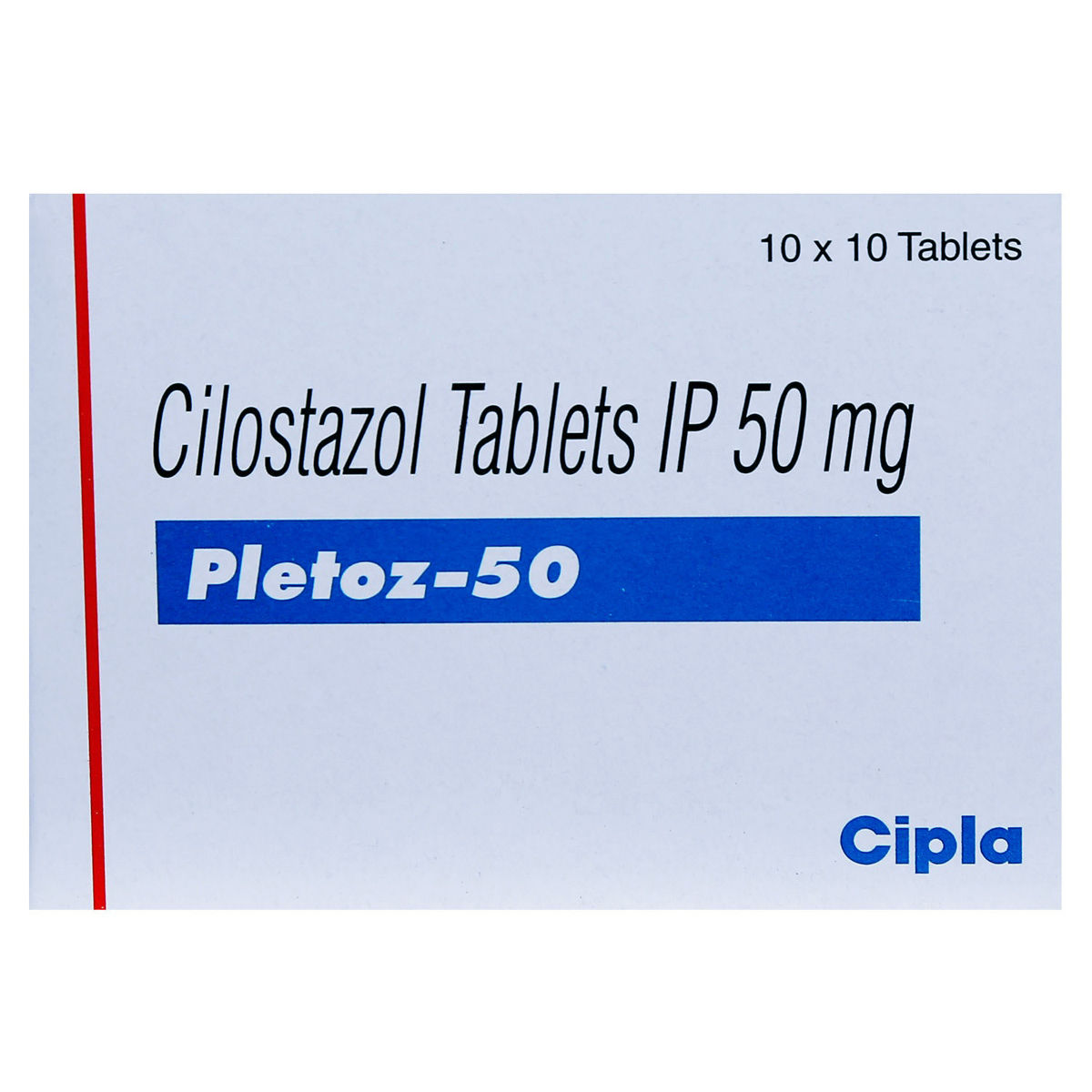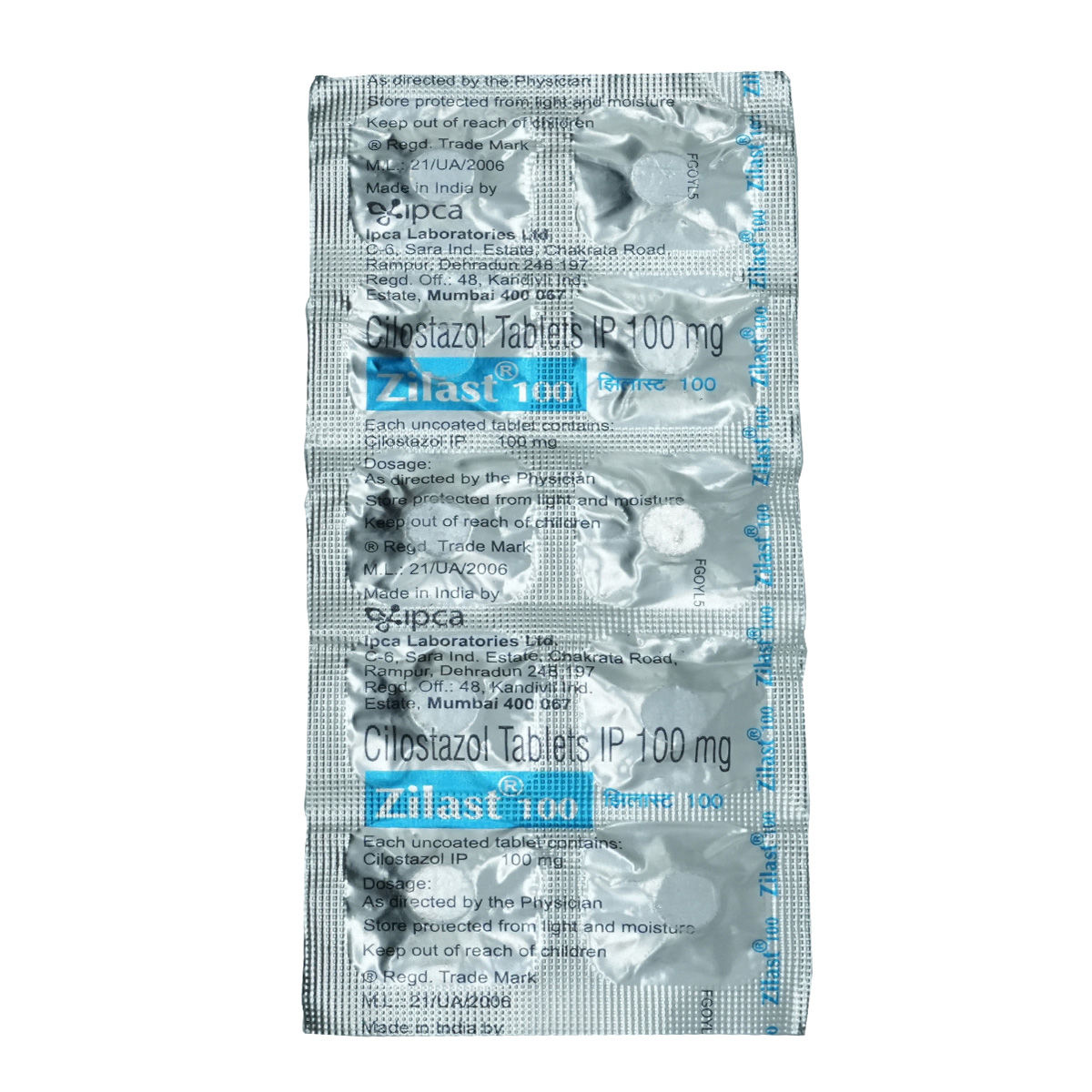Cilostazole
About Cilostazole
Cilostazole contains vasodilator (blood vessel widening) medication, Cilostazole, which is primarily used to treat pain in the legs due to insufficient blood flow (intermittent claudication). It also reduces cramping, numbness or weakness in the legs on walking in such patients. Intermittent claudication is a peripheral vascular disease in which you have cramp-like pain in your legs when you walk and is caused by an insufficient blood supply in your legs.
Cilostazole works by widening the blood vessels and reducing the blood clotting time, thereby decreasing stickiness in blood vessels. Hence, increasing the blood supply to the limbs. It can also increase the distance you can walk without pain since it improves your leg's blood circulation. It is recommended in patients whose pain has not improved even after lifestyle changes like quitting smoking and doing regular exercise.
Cilostazole should be taken regularly in dose and duration as advised by the doctor. It would be best to take it on an empty stomach and at a fixed time every day. Your doctor will advise you on the exact dosage and how often you must take Cilostazole based on your medical condition. In some cases, you may experience headaches, ankle swelling, diarrhoea, abnormal stools, vomiting, and nausea. Most of these side effects of Cilostazole do not require medical attention and gradually resolve over time. However, if the side effects are persistent, reach out to your doctor.
Cilostazole should not be stopped abruptly without consulting the doctor as it may lead to unpleasant side effects. Also, it is not suitable for some people. Inform your doctor before starting Cilostazole if you have any kidney or liver disease, plan to become pregnant, or are breastfeeding. Also, lifestyle changes should be continued with Cilostazole for best results. Do not take the Cilostazole if you ever had heart failure, chest pain, heart disease, and blood pressure. Before taking the Cilostazole, inform your doctor about your medical history and ongoing therapies to rule out any potential adverse effects or interactions.
Uses of Cilostazole
Medicinal Benefits
Cilostazole contains, Cilostazole, which is a vasodilator that works by widening the blood vessel and reducing the blood clotting time, thereby decreasing stickiness in blood vessels. Hence, increasing the blood supply to the limbs. It can also increase the distance you can walk without pain since it improves your legs' blood circulation. It is recommended in patients whose pain has not improved even after lifestyle changes like quitting smoking and doing regular exercise.
Directions for Use
Storage
Side Effects of Cilostazole
Headaches
Ankle swelling
Diarrhoea
Abnormal stools
Vomiting
Nausea
Drug Warnings
Cilostazole should not be given to the people allergic to Cilostazole, have low blood pressure (less than 90 mm of Hg), have had a heart attack, kidney disease, liver disease, pregnant women or planning to get pregnant and breastfeeding women. Do not take Cilostazole with grapefruit juice or St John wort plant as it might affect the absorption of Cilostazole. Tell your doctor that you are using Cilostazole before undergoing any dental or other surgery. Your doctor might stop this medicine before the surgery. It is best to take Cilostazole on an empty stomach and at a fixed time every day. Cilostazole should not be stopped abruptly without consulting the doctor as it may lead to unpleasant side effects. Also, lifestyle changes should be continued with Cilostazole for best results and a speedy recovery.
Drug Interactions
Drug-Drug Interactions: Cilostazole interacts with some medicines, so it should be used with caution with blood thinners (rivaroxaban, aspirin), antibiotics (erythromycin, clarithromycin or rifampicin), anti-fungal (ketoconazole), anti-hypertensive (diltiazem, lovastatin, simvastatin, atorvastatin), anti-migraine (ergotamine, dihydroergotamine), sedatives or hypnotics (buspirone), certain antidepressants (fluoxetine and lithium), medicines to lower blood pressure (methyldopa), anti-Parkinson’s (levodopa, pramipexole, ropinirole), anti-epilepsy (phenobarbital, carbamazepine, phenytoin, rifampicin, primidone, oxcarbazepine, ethosuximide, valproate).
Drug-Food Interactions: Grapefruit juice intake and St. John’s wort (An herbal remedy for depression) should be avoided with Cilostazole as it may interact with Cilostazole to produce unpleasant side effects.
Drug-Disease Interactions: Cilostazole should be taken with caution in people with a bleeding problem, have had a heart attack, kidney disease, liver disease, pregnant women or planning to get pregnant and breastfeeding women.
Drug-Drug Interactions Checker List:
Safety Advice

Alcohol
safe if prescribedNo interaction found; in case of any discomfort, consult your doctor.

Pregnancy
cautionCilostazole is not recommended during pregnancy unless your doctor considers it essential. Your doctor will weigh the benefits and any potential risks before prescribing it to you.

Breast Feeding
unsafeCilostazole is not recommended for breastfeeding mothers as it may harm the baby.

Driving
cautionDrive with caution, Cilostazole may cause blurry vision and dizziness or weariness may occur.

Liver
cautionCilostazole to be taken with caution, especially if you have a history of liver diseases/conditions. The dose may have to be adjusted by your doctor.

Kidney
cautionCilostazole to be taken with caution, especially if you have a history of kidney diseases/conditions. The dose may have to be adjusted by your doctor.

Children
unsafeCilostazole is not recommended for children. The safety and effectiveness of Cilostazole have not been established in children due to limited testing of this drug on children. If necessary, your doctor will decide whether to give Cilostazole or not.
Habit Forming
Diet & Lifestyle Advise
Exercising regularly helps in improving overall health. Take a break between exercises if you feel uneasy. Finding the right exercise is the key.
Rest well, and get plenty of sleep.
Take proper care of your legs and feet.
Wear shoes that fit you well.
Check your feet daily for any cracks or sores.
Try to stay warm. Avoid cold temperatures.
Avoid smoking and alcohol consumption.
Meditation and yoga can help lower stress, decrease pain sensitivity and improves coping skills.
Acupuncture can be helpful by stimulating pressure points.
Using essential oils for massages can help increase circulation.
Patients Concern
Disease/Condition Glossary
Intermittent claudication: Intermittent claudication, also known as vascular claudication, is a symptom in which muscle pain or mild exertion occurs during exercise. The pain is generally felt in the calf muscle. Symptoms include cramp, ache, fatigue, and numbness.
FAQs
Cilostazole is used to treat intermittent claudication (pain in the legs due to insufficient blood flow). It also reduces cramping, numbness, or weakness in the legs when walking in such patients.
Cilostazole works by widening the blood vessel and reducing the blood clotting time, thereby decreasing stickiness in blood vessels. Hence, increasing the blood supply to the limbs. It can also increase the distance you can walk without pain since it improves your leg's blood circulation.
No, you should not stop taking Cilostazole even if you feel better as the pain might come back and become even worse.
Yes, taking Cilostazole can increase bleeding risk as it contains cilostazole, which increases bleeding time. So, please be very cautious while shaving, cutting fingernails or toenails, or using sharp objects to avoid bleeding. Let your doctor know before going any surgical procedure that you are taking Cilostazole.
No, it is a prescribed drug given by a physician for preventing specific medical conditions. Taking it on your own can cause unwanted side-effects.
If you forget to take Cilostazole at any time, take it as soon as you remember, then continue to take it at the usual times. Do not take a double dose to make up for a forgotten dose.
Yes, Cilostazole contains cilostazole which increases the blood clotting time. It works by preventing platelets (a type of blood cell) from sticking together and forming clots, preventing heart attack and stroke.
Cilostazole may cause side effects like headaches, ankle swelling, diarrhoea, abnormal stools, vomiting, and nausea. Most of these side effects of Cilostazole do not require medical attention and gradually resolve over time. However, if the side effects are persistent, reach out to your doctor.
Cilostazole might lower the blood pressure; taking Cilostazole with blood pressure-lowering medicines might further decrease the blood pressure. Therefore, please consult the doctor before taking Cilostazole with other blood pressure-lowering medicines.
You may notice an improvement in 2-4 weeks. However, it might take 12 weeks to notice the full benefits of Cilostazole. Keep taking Cilostazole for the prescribed duration to treat your condition effectively.
No, do not smoke if you are taking Cilostazole as smoking might affect the working of Cilostazole.
You are advised to take Cilostazole for the duration prescribed by the doctor. The duration of treatment will depend upon your condition and response to the treatment.
Yes, you may need to stop taking Cilostazole a few days before surgery to avoid the increased risk of bleeding during the procedure. Let the doctor know if you are due to undergo surgery.
Cilostazole might lower the blood pressure as it widens the blood vessels. Therefore, if you have low blood pressure/high blood pressure or if you are taking blood pressure-lowering medicines, please consult the doctor.
Cilostazole is not advised for patients with heart failure due to its potential to increase platelet aggregation, which could lead to higher mortality rates in these individuals.







